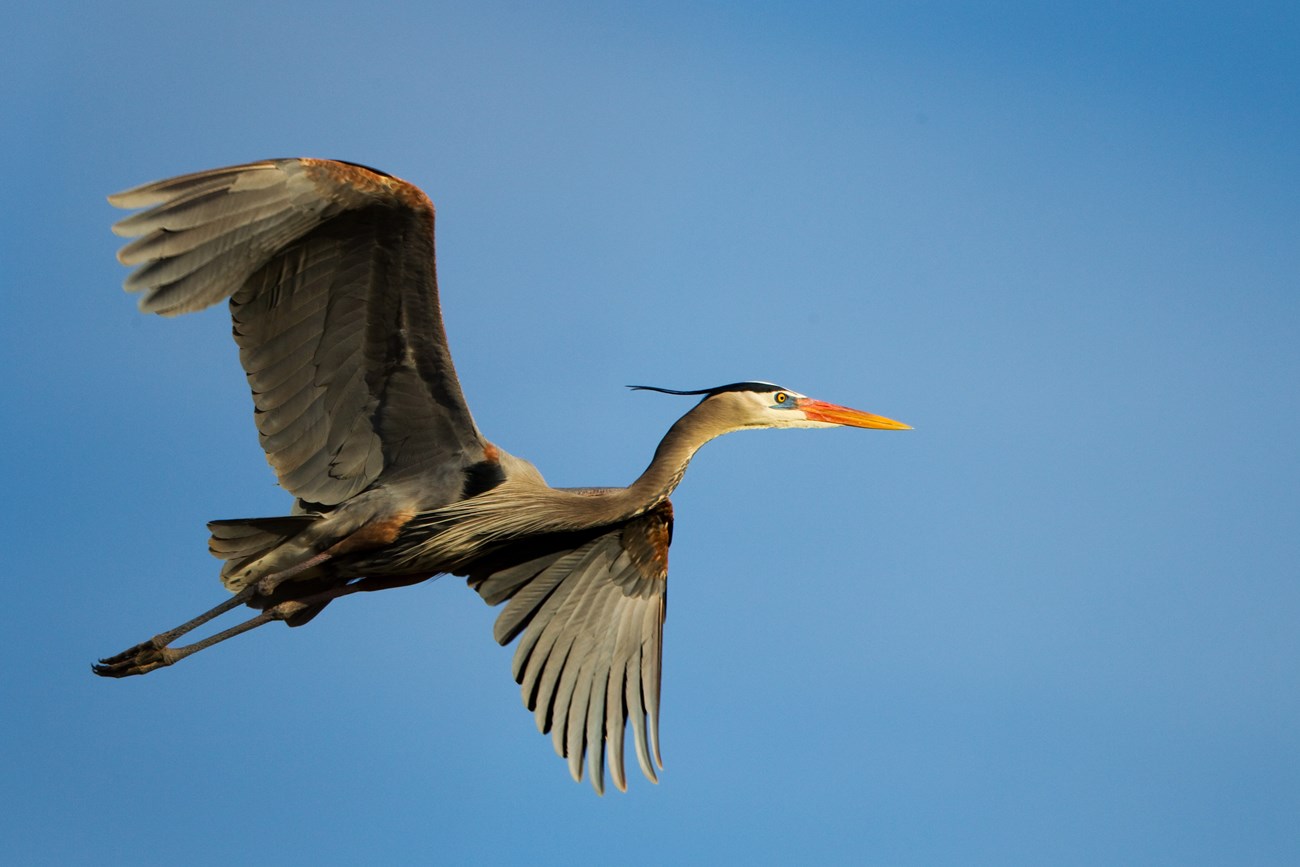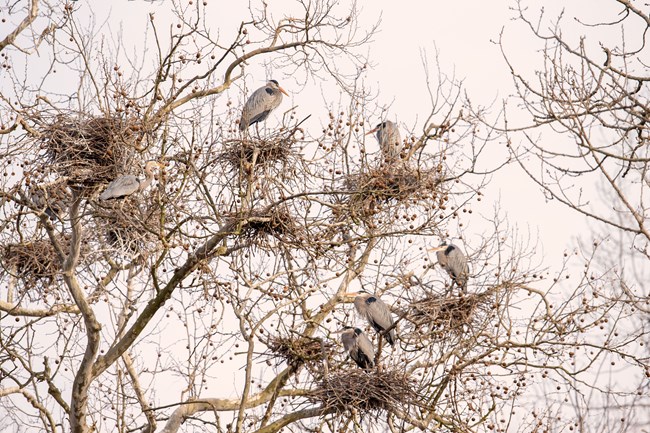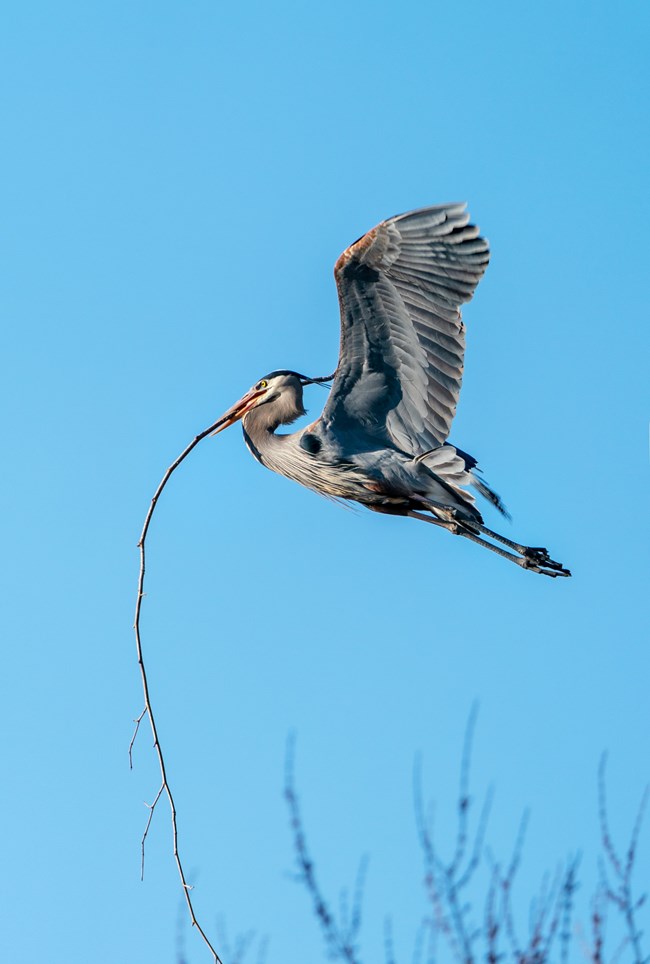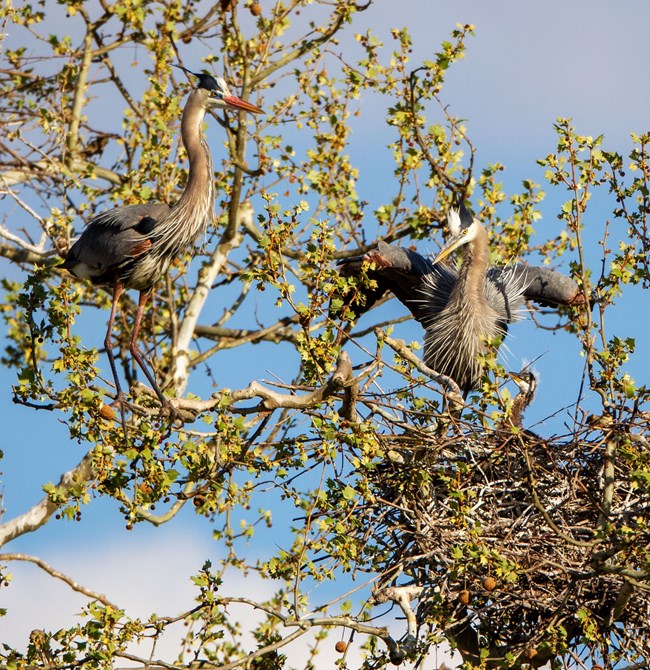Last updated: January 13, 2022
Article
Great Blue Herons in Cuyahoga Valley

© Jim Roetzel
It is common to see the large, elegant shape of a great blue heron in Cuyahoga Valley. Their numbers have soared since the national park was established in 1974. This is due to the local return of wetland-building beavers (once trapped out of Ohio), as well as human efforts to restore the Cuyahoga River. The valley’s first nesting pair was recorded in 1985 just north of Station Road Bridge Trailhead.
The largest heron in North America, the great blue is impressive. It stands four feet tall, weighs slightly over four pounds, and has a wingspan of nearly seven feet. In flight, its long neck is usually coiled and its wings are arched, giving it a distinctive silhouette. Its wings beat slowly and steadily. Other large birds hold their wings in V (turkey vultures) or out flat like an airplane (bald eagles).

© Jim Roetzel
Where and When
These herons are generally spotted in wetlands, along the Cuyahoga River, or in their nesting colonies. Look for them slowly stalking fish, frogs, and various other small animals along the water’s edge. They often stand motionless, waiting for a chance to strike. From about Valentine’s Day to Independence Day, you can easily observe one of their nesting colonies, called the Bath Road Heronry. Numbers there peaked in 2003 with 176 nests. Storms have since taken down some key limbs and trees. The former colony in the Pinery Narrows near Station Road Bridge was abandoned after a pair of bald eagles moved in. Newer colonies in the north and south of the valley, discovered around 2006, are in remote locations. The most recent one can be viewed from a distance along the Towpath and Hemlock Creek trails near Stone Road.
Great blue heron migration patterns in Ohio are extremely variable. Some birds travel to the Gulf States in winter. Others fly just one or two states south. The remainder stay throughout the year.

© Jim Roetzel
Nesting
Great blue herons nest in colonies, called heronries. Nests are typically in 30-70 foot high trees surrounded by water. Both the male and female share in nest building and caring for the young. Depending on the severity of the winter, males usually start returning to the nesting areas in early February to claim their nests. Two to three weeks later the females arrive, and seasonal monogamous pair bonds are established. From early March to early April is the best time to observe nest building. A male will gather a stick and present it to the female, who takes the stick and adds it to the nest, strengthening the pair bond. Later the inside of the nest will be lined with fine twigs and leaves. Great blue herons are known to use nests from previous years, although it is not known whether or not the same individuals use the same nests each year.
The Bath Road heronry is unusual because it is near a busy road. Typically herons nest in more secluded areas. Over the past decade, we've observed this shift. It is normal for herons to change their nesting locations over time.

© Jim Roetzel
Raising Chicks
After courtship and mating, the female heron lays three to seven eggs over a period of a few days. Both parents share in incubating the eggs for approximately 28 days. The eggs are rolled every few hours so heat is evenly distributed to the developing embryo. Hatching occurs over the span of a few days, typically in late April or early May. May and June are busy months at the heronries, when adult birds can be seen bringing food to the growing nestlings. The young herons fledge after 56 to 60 days, usually by early July.
To learn more, read this 2018 interview with Citizen Scientists Peg and Rob Bobel who have spent years monitoring these magnificent birds.
